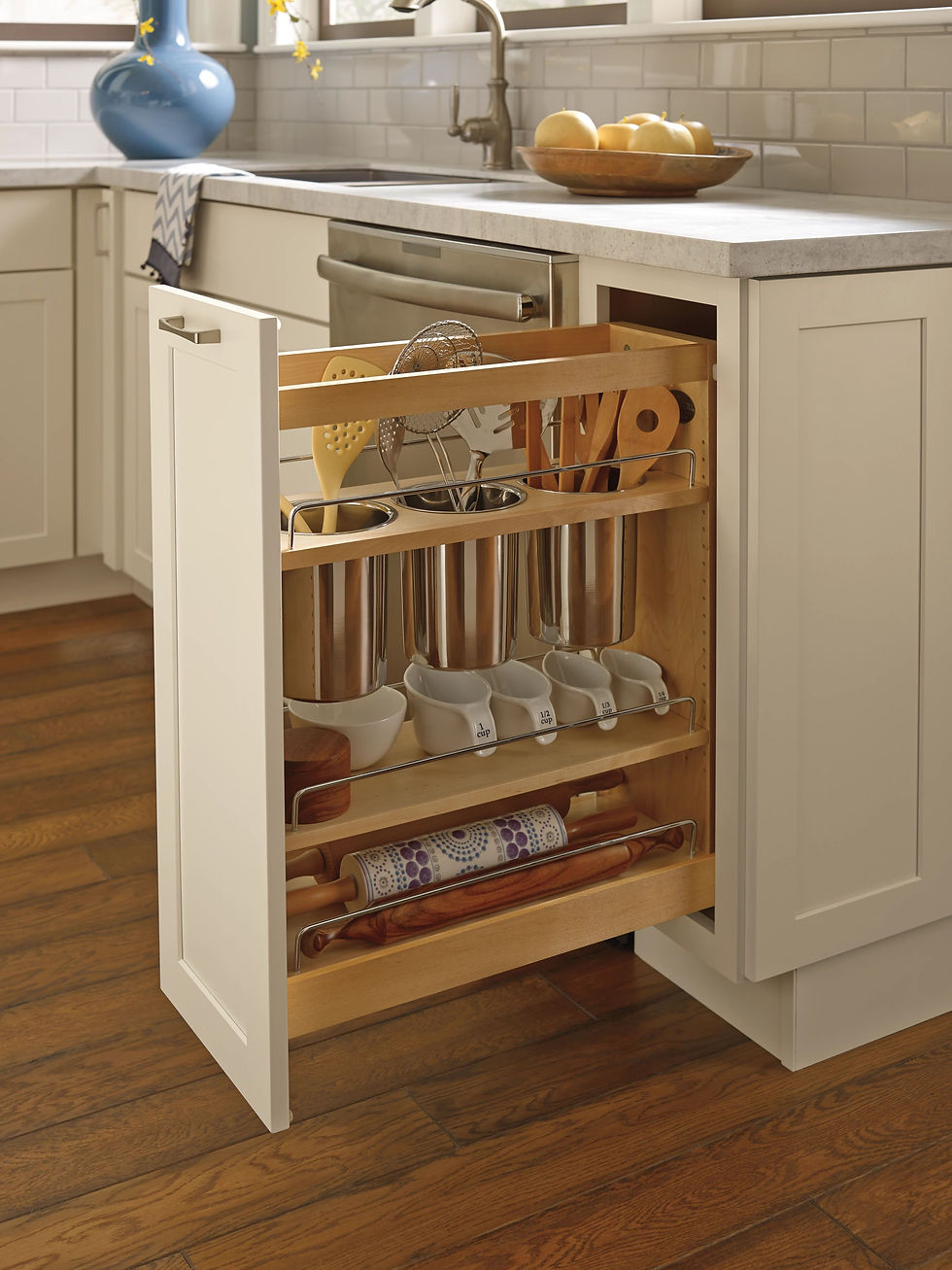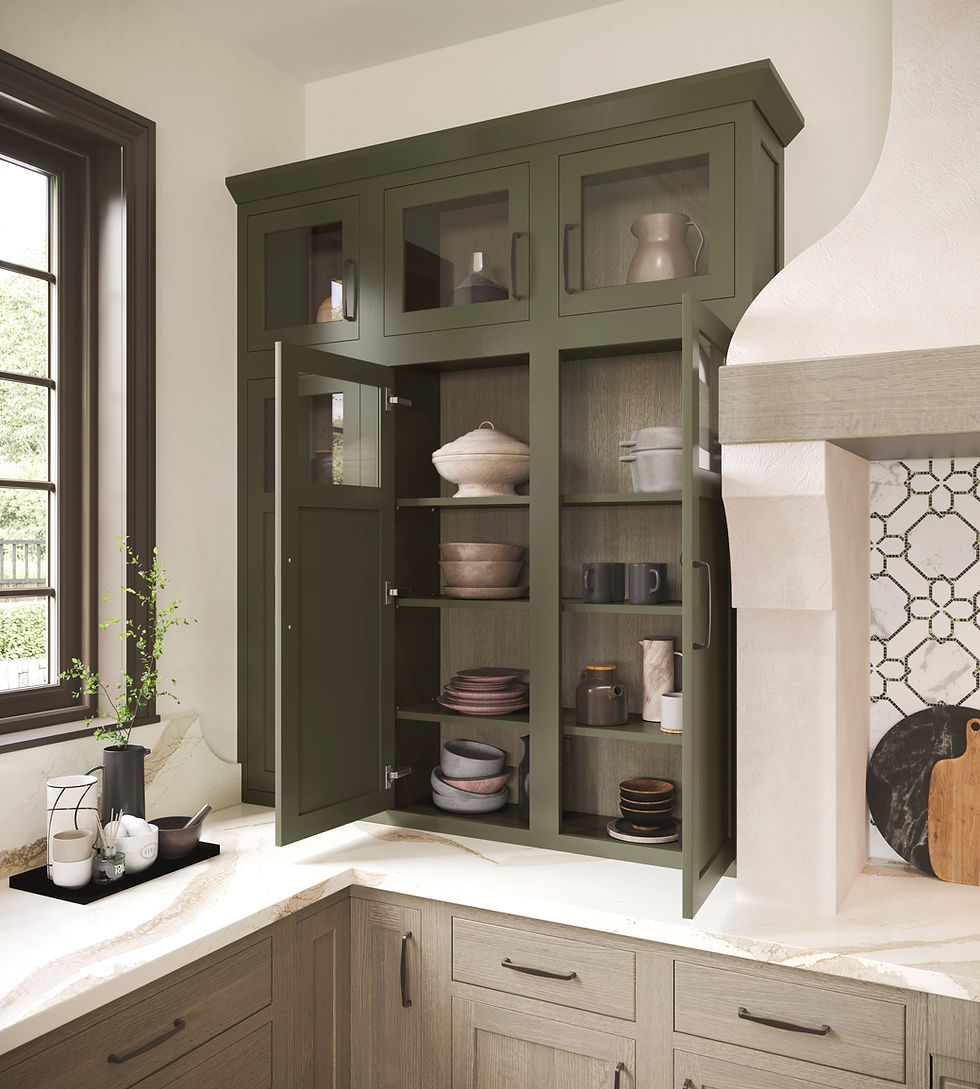Crafting Custom Cabinetry: A Guide for Interior Designers
- designrequest
- Apr 14, 2024
- 3 min read
Cabinetry is the unsung hero of interior design, offering both functionality and style to any space. When it comes to designing a room, whether it’s a kitchen, bathroom, or living area, cabinetry customization plays a crucial role in optimizing the space and enhancing the overall aesthetic. However, not all customization is created equal. As interior designers, it’s essential to discern which types of cabinetry customization are necessary for a project and which ones are better left on the cutting room floor. Let’s explore this topic from the perspective of an interior designer.

Understanding the Needs:
Every design project begins with a thorough understanding of the client’s needs and preferences. When it comes to cabinetry, this means considering factors such as storage requirements, aesthetic preferences, and budget constraints. Before diving into customization options, it’s crucial to have a clear understanding of what the client hopes to achieve with their cabinetry.

Optimizing Space:
One of the primary purposes of cabinetry is to maximize storage space while minimizing clutter. Customization can play a significant role in achieving this goal. For example, in a kitchen design, custom-built cabinets can be tailored to fit specific appliances, cookware, and utensils, ensuring that every inch of space is utilized effectively. Similarly, in a bathroom design, custom vanities can be designed to accommodate plumbing fixtures and provide ample storage for toiletries and linens. When considering cabinetry customization, the key is to prioritize functionality and efficiency.

Enhancing Aesthetics:
In addition to functionality, cabinetry customization can also enhance the aesthetic appeal of a space. Custom finishes, hardware, and detailing can add character and personality to cabinetry, elevating the overall design scheme. However, it’s essential to strike the right balance between style and substance. While decorative elements can enhance the visual impact of cabinetry, they should not overshadow its primary purpose. As designers, it’s our job to ensure that customization choices are both visually appealing and practical.

Considering Longevity:
Another factor to consider when evaluating cabinetry customization options is longevity. Will the customizations stand the test of time, or are they likely to become dated in a few years? While it’s tempting to embrace the latest design trends, it’s important to think long-term and consider how customizations will age over time. Opting for timeless finishes and classic design elements can help ensure that cabinetry remains relevant and stylish for years to come.

Balancing Budget:
Of course, budget is always a consideration when it comes to cabinetry customization. While custom-built cabinetry offers endless possibilities, it can also come with a hefty price tag. As designers, it’s our responsibility to work within the client’s budget while still delivering a high-quality end result. This may mean prioritizing certain customizations over others or exploring alternative options, such as semi-custom or stock cabinetry, that offer a balance of customization and affordability.

Weighing Functionality vs. Frills:
When it comes down to it, the most crucial factor in deciding which type of cabinetry customization is necessary is functionality. Customizations should enhance the usability and practicality of the space, rather than serving purely decorative purposes. While decorative details can certainly add flair to cabinetry, they should never come at the expense of functionality. As designers, we must carefully weigh the benefits of each customization option, ensuring that it serves a meaningful purpose in the overall design.

Collaborating with Clients:
Ultimately, the best approach to cabinetry customization is a collaborative one. By working closely with clients to understand their needs, preferences, and budget constraints, designers can make informed decisions about which customizations are necessary and which ones are not. Communication is key, and designers should be prepared to educate clients about the pros and cons of different customization options, guiding them towards choices that align with their vision and goals.

Conclusion:
Cabinetry customization offers endless possibilities for interior designers, allowing us to create spaces that are both functional and beautiful. However, not all customization is created equal, and it’s essential to approach the process with careful consideration and discernment. By prioritizing functionality, aesthetics, longevity, and budget, designers can make informed decisions about which types of cabinetry customization are necessary for each project, ensuring that the end result is a space that is both practical and visually stunning.

.png)









































Comments